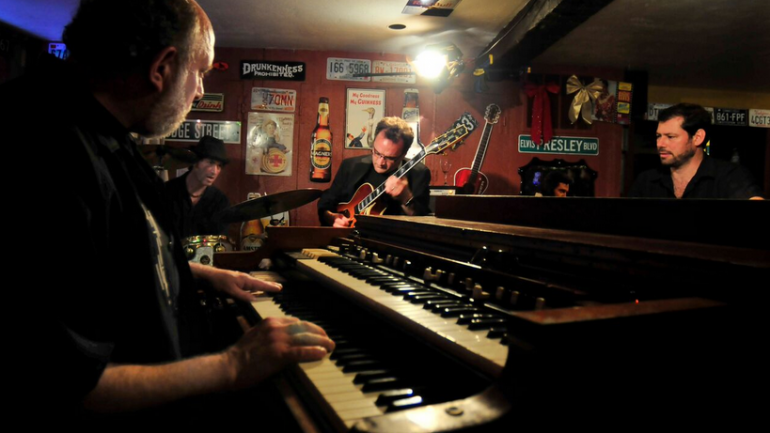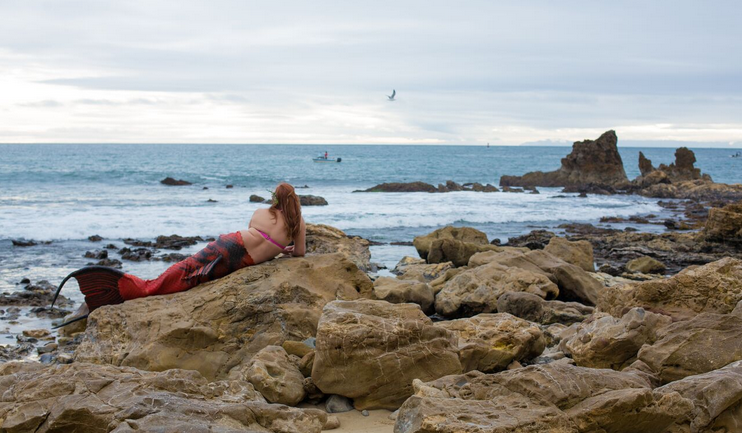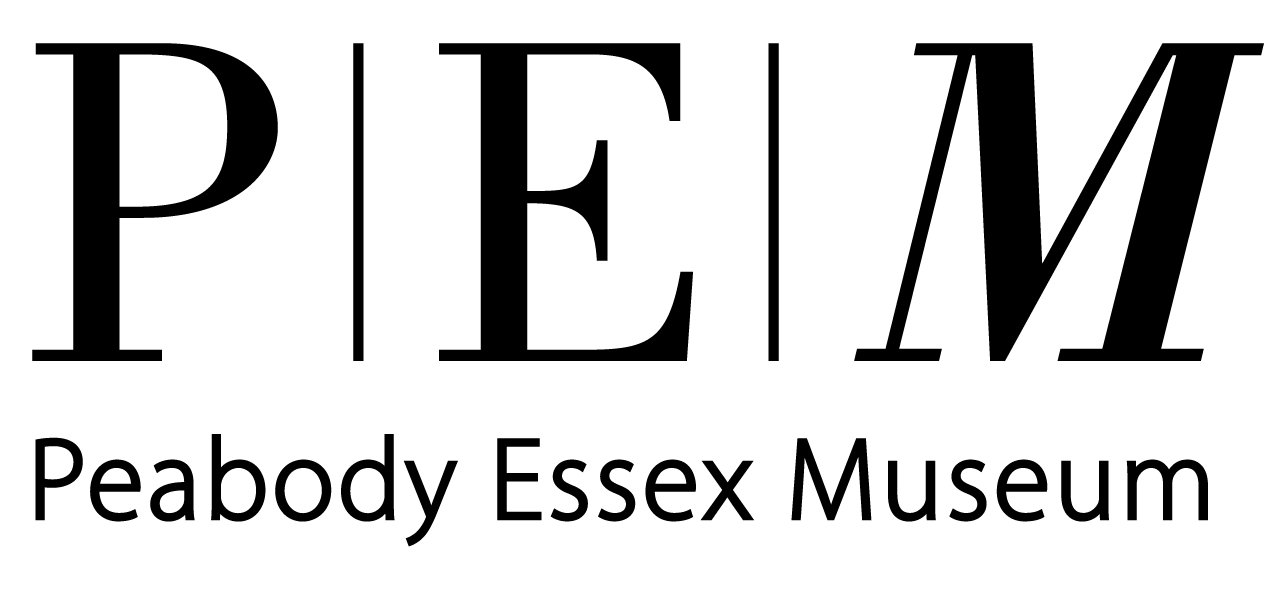By Kereth Cowe-Spigai
MERMAIDS is my favorite kind of documentary--the kind that surprises me. When I sat down to watch this film, my interest level was fair to middling, and it was difficult to imagine connecting with the subject matter. But I did. In a pretty big way. That's the beauty of a great documentary--it manages to communicate essential truths through what can sometimes seem like obscure or unusual subject matter. The trick is to show that something small and unknown, something strange, is familiar, profound even, through the right lens. MERMAIDS certainly possesses this quality. One of the ways the film achieved this visually is through the stunning underwater photography. Director Ali Weinstein was kind enough to take the time to talk about her film with me, and the very first thing I wanted to know about were the breathtaking underwater shots.
KCS: Had you any experience with underwater photography prior to making this film?
AW: Thanks for the really nice words about the underwater cinematography in MERMAIDS. No, the only experience I’d had shooting underwater prior to this was while making a short film during film school. I got my friend to hold a GoPro while I (unsuccessfully) attempted some synchronized swimming moves that I used to be a lot better at in my youth. The footage turned out really moody but beautiful, partly because it was so low res and abstract.
KCS: Can you describe the process you went through with DP Catherine Lutes in crafting the underwater shots?
AW: Catherine is an incredible cinematographer, but she had never done any underwater work before, and we naively just threw her in the water hoping for the best. We bought an underwater housing and she had just a couple of hours to practice with it before we asked her to start shooting our subjects underwater. We were really lucky because as it turns out she’s an amazing swimmer and was able to get some beautiful shots right off the bat. I wanted our characters to be held up on screen in all their mermaid glory in the underwater shots especially – this was their chance during the film to fully transform into their alter egos, and have audiences view them as mermaids. So that was a goal that we aimed for – seeing their joy and their comfort underwater. We wanted these shots to be especially colourful and ethereal and majestic. We enlisted the help of a couple of other underwater cinematographers in addition to Catherine. We shot some of the film in Hawaii, and we knew of a couple who live there – Ali and Jim Ward – who are underwater photographers and had previously done a lot of work with mermaids. Because we were shooting in the open ocean and not in a controlled area like a pool, and because Ali and Jim are trained free divers who can stay underwater for extended periods of time, we decided to hire them to get some epic shots from deep in the water of Rachel swimming. So the intro and ending underwater shots of the film were both filmed by Ali and Jim. Surprisingly, no scuba diving gear was used during this film at all!
KCS: The narration over some of the underwater footage was such an effective way to connect the mermaid archetype to your characters' personal stories. How did you connect with Anastasia Phillips? Can you talk about the recording process a little bit? Was she able to see the footage before recording her lines?
AW: Thanks! While researching the film, I realized that there are literally mermaid myths from every corner of the world. I didn’t previously know the extent of the universality of this legend, but mermaids really are everywhere! It was important to me to acknowledge this in the film even though the movie is really about the lives of these five modern-day women. It was a bit tricky to figure out a way to incorporate some of the myths with our characters’ stories, and I worried that whatever we did would come off as cheesy. We found Anastasia just by reaching out to voice talent agents in Toronto who sent us clips of their actors reading our lines. We listened to hundreds of people, and Anastasia immediately stood out from the rest. Her voice was rich and beautiful and most of all just really natural, and I knew she could read these lines (which ran the risk of feeling too separate from the rest of the film) in a very organic way. Before working together, we talked on Skype once because she was in LA at the time, and then when she was back in Toronto we recorded all the lines in one two-hour session at a sound studio. She watched the underwater footage as she recorded the lines, but she hadn’t previously seen the film. I am so happy with the way it turned out; she’s a total pro.
KCS: One of the recurring themes across characters is the ephemeral, almost spiritual quality of being completely submerged in water--a sentiment you touched on in your Director's Notes as well. You focused on a few mermaids in particular, but did you find that to be the experience of the other mermaids you spoke to as well?
AW: For sure! I think one of the most common experiences we heard about from all the mermaids we met along the way is the sense of freedom they feel when they’re in their tails in the water. But I think that a lot of people can relate to that, whether you’re into mermaids or not. I think the lack of gravity, the quiet, and the sense of being totally alone when you’re submerged underwater all contribute to the sense of getting out of our everyday element, so to speak. Water is an element that symbolizes life and renewal to us, we come from it, are made of it, are baptized in it, and I think our basic human connection to it is part of what has allowed for mermaid myths to exist all over the world. A lot of people have related to this aspect of the film even if they never thought to put on a mermaid tail before.
KCS: Your subjects seem to all have a sense that there is something about their mermaid identity that clicks--it just makes sense--feels authentic to them as people. To me that points to something rather revolutionary and transcendent within a social structure that is heavily oriented toward a rigid gender binary. It seems to move the idea of an identity of the body in a direction that hasn't been explored in any mainstream context. Did you have a sense of this while you were getting to know these characters--that you were exploring something momentous, significant?
AW: When choosing who to focus on in the film, I remember telling Caitlin (the producer) that our main criteria should be finding people who were real mermaids. I didn’t exactly know what that meant at the time, and still don’t. But some of the people that we met clearly had such a strong connection to this part of their identity that they simply came off as mermaids, it didn’t seem like a character they were playing, and those were the people I wanted to hone in on. All of the women that we feature in the film have that authenticity in their mermaid identities. I didn’t think about it as a revolutionary idea, but certainly understanding this part of their identity was an important part of the film. And it was really significant to us that Julz wanted to take part in the film because within the mermaid community there are a lot of transgender mers, and we were really happy to be able to represent that experience in the film. Julz does a wonderful job of describing what wearing a tail does for her psychologically and how it allows her to feel more in sync with her body in the movie.
KCS: How have audiences received the film? Have you had any meaningful connections with viewers over their experience of the film?
AW: Overall, we’ve received very positive reactions so far, and it’s always such a nice feeling when an audience member lets us know how much they related to the characters in the film. One woman told us that seeing the strength and beauty of the women featured in our film made her feel strong and beautiful too, and that was probably the best compliment we could have gotten. Or when someone tells me that they only went to see the film because a friend dragged them but then they ended up loving it – that’s happened a few times too, which is always a really nice thing to hear. It’s not a topic that instantly appeals to everyone, so it’s nice to know that sometimes people will find an unexpected connection to our mermaids.
KCS: You mentioned in your Director's Notes that you channeled some of your love of mermaids into synchronized swimming as a teenager. Is that something you ever go back to? Have you donned a fin?
AW: Actually, I was inspired to get back in the water and try synchro again while shooting MERMAIDS! While interviewing Vicki (the 76-year-old mermaid who still swims at Weeki Wachee), she said, “can you imagine doing what you loved doing when you were just 17?” When I got home from that shoot, I joined a masters synchronized swimming team here in Toronto because that’s what I loved doing at 17. But on a less inspiring note, my filming schedule ended up being so rigorous that I couldn’t keep up with the team after a few months…so I had to stop. I do love swimming though, and it was such a pleasure to get to swim in so many pools, rivers, and oceans during the making of this film! Both Caitlin, my producer, and I tried on tails while we were filming, which was a lot of fun. We wore beautiful handmade silicon tails by Finfolk in the Hawaiian ocean, and it was surreal. They’re not easy to swim in, but once you get the hang of it, you do feel like an otherworldly creature.
KCS: Do you stay in touch with the subjects? Any updates you'd like to share?
AW: We do stay in touch with our mermaids from time to time. I’m happy to say that everyone seems to be doing really well! Vicki is still swimming at 78! Julz and Nicole are doing great and are now engaged. Rachel and her mom are working as hard as ever at Dive Bar and Mermaid and Mom. And Cookie and Ralph are also doing great. Ralph even tried on a tail not long ago, which he swore he’d never do.
Well that certainly speaks to the power of the fin--Cookie and Ralph as a pair of merfolk is a lovely image! Thanks again Ali for taking the time to discuss your film with us.
MERMAIDS screened on Saturday, March 24th at 2:40PM at CinemaSalem.
Ali Weinstein in attendance for a Q&A after the film.






